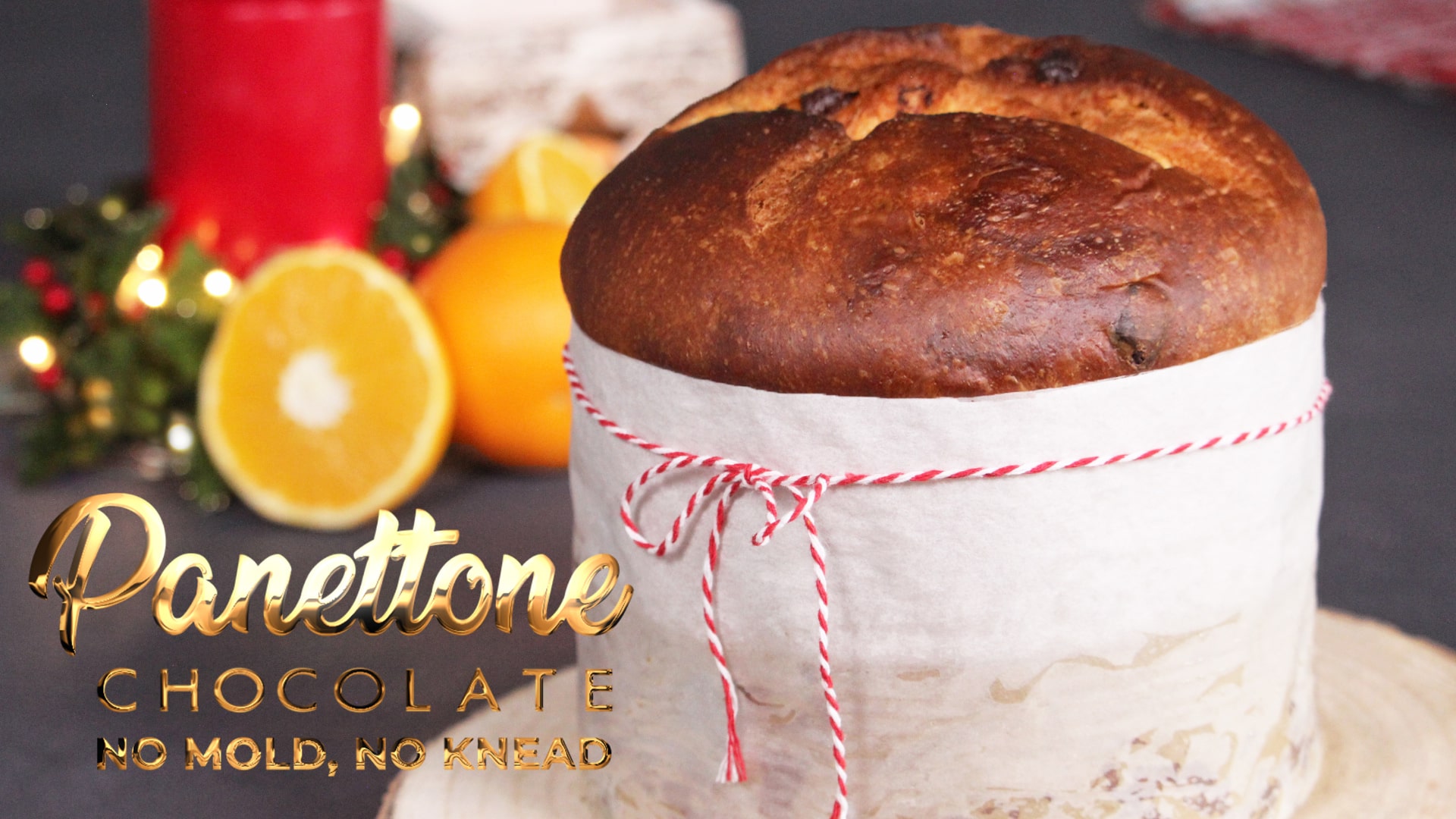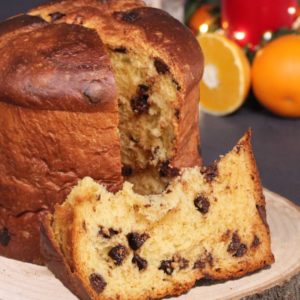
CHOCOLATE PANETTONE - NO MOLD, NO KNEAD
Equipment
- Parchment paper
- Stapler
- Ruler, scissor, pencil
- 17cm-6,5inch springform cake pan (optional)
- OR 1 kg traditional Panettone paper mold
Ingredients
- 180 g (3/4 cup) lukewarm water
- 18 g (1 tbsp) honey
- 7 g (2 tsp) active dry yeast or instant dry yeast
- 140 g (2/3 cup) sugar
- 70 g (4) egg yolks at room temperature, beaten
- The zest from 1 orange grated
- 1 tsp vanilla extract
- 420-440 g (4 cups) strong bread flour with 14 g of protein I've used Manitoba flour. If you can't find this type of flour, use a bread flour with high protein amount (13-14 g).
- 110 g (1/2 cup) unsalted butter softened or melted
- 180 g (1+1/4 cups) chocolate chunks
Instructions
Make the mold
- Grease a 17cm-6,5inch springform pan* with butter and line the bottom with parchment paper. *If you don't have a 17cm-6,5inch springform pan, you can make the Panettone mold only using parchment paper by following the method I show in this recipe video.
- Cut a 58x24 cm-23x9,5 inch rectangle with parchment paper.
- Longwise fold in two: you get a 58x12cm-23x4,7inch rectangle.
- Press and slide your fingers over the fold: this encourage the rectangle to easily close and shape into a ring.
- Stick the parchment paper rectangle onto the sides of the springform pan to create a high paper sides; overlapping the rectangle and use a stapler to secure it. You get a 17x12cm-6,7x4,7inch Panettone mold!
Make Panettone
- In a large bowl, dissolve honey in water, add the yeast and wait 10 minutes to activate the yeast. The waiting time is optional and you can skip it if you use instant yeast or if your active dry yeast doesn't need to be activated.
- Add sugar, beaten eggs and mix until well combined. Then add vanilla, orange zest and mix until combined.
- Add flour in 3 times: use a strong bread flour with about 14 g of pretein amount (like Manitoba).
- Gradually incorporate the melted butter in about 3-4 times: be patient, you should mix with a spatula some minutes beofre the butter is completely incorporated into the dough. You get a very very sticky dough, more similar to a thick batter than a dough: it's ok!
- Using a spatula, mix the dough for some minutes until become less sticky.
- Cover the bowl with plastic wrap and let it rise in a warm place for about 1,30 or 2 hours.
- Place the chocolate chunks onto a lined baking sheet and put in freezer until the dough is ready.
- After the first dough rising time, the dough is more shiny and a bit less sticky. Invert it onto your work surface (I suggest to use a silicone mat since the dough is still a bit sticky) and, helping with a spatula, you can make some folds to get a more elastic dough.If you have a stand mixer, instead of making folds, you can knead it at medium speed until pulls away from the bowl and becomes more shiny and elastic, about 15-20 minutes. This kneading time is OPTIONAL! I didn't make it in the recipe video and, as you saw, my Panettone turned out soft and delicious.
- Gently form the dough into a large rectangle and place the frozen chocolate chunks on top. Fold the rectangle dough with the chocolate chunks inside and form into a ball.
- Transfer the dough ball into the prepared mold.
- Cover with plastic wrap and place in refrigerator to rise overnight (you can leave it in the fridge from 8 to 20 hours). Remember to let it rest at room temperature for at least 2-3 hours before bake it.Alternatively you can let it rise quickly in a warm place: it's ready when the dough reaches 1-2cm from the top of the mold.
- When Panettone rised and it's ready, remove the plastic wrap on top and let the top dry at room temperature for 20-30 minutes.
- Using a blade, score a cross on top of panettone and place a piece of cold butter on top.
- Bake in preheated oven (no fan, upper+lower heat) at 160°C-320°F for 50 minutes or until a skewer comes out clean.
- After about 25 minutes that it's baking, cover Panettone on top with a double aluminium foil to prevent burns.
- Cool down for at least 2 hours before slice it and serve it.If you've used a traditional panettone paper mold, you can skewer panettone - immediately when comes out from the oven - at 1cm-0,5 inch from the bottom with two long knitting needles and invert panettone upside down over two paper towel rolls (watch this video to see the technique): in this way your panettone won't become flat on top.If you've used a homemade parchment paper mold, you can't cool it down upside down.
Video
Notes
Hello, I am Valentina! Welcome to How Tasty!

I am an Italian girl in love with baking and cooking. I’ve been raised in a cooking family, baking since I was a little girl and learning from my mom and my professional chef grandma.
I created the Youtube channel How Tasty in 2017 to share with you my passion.
You don’t need to be a professional cook to follow all my recipes thanks to the video tutorials and the tips & hints you can find here.
Let’s cook!
Tips:
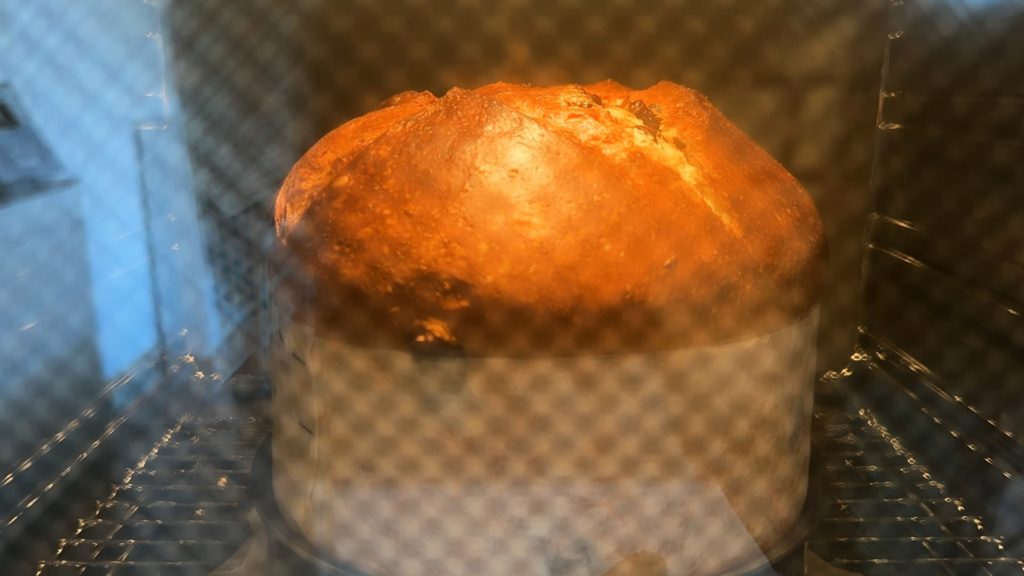
For this recipe you have to use a bread flour with a high amount of protein (at least 13 g of protein; I’ve used Manitoba flour that features 14 g of protein).
Don’t use all purpose flour, because it absorbes less water, so you maybe should add way more all purpose flour to make this dough.
This dough has to be pretty sticky and it rises many hours, if you use all purpose flour Panettone will turn out less tall and less fluffy!
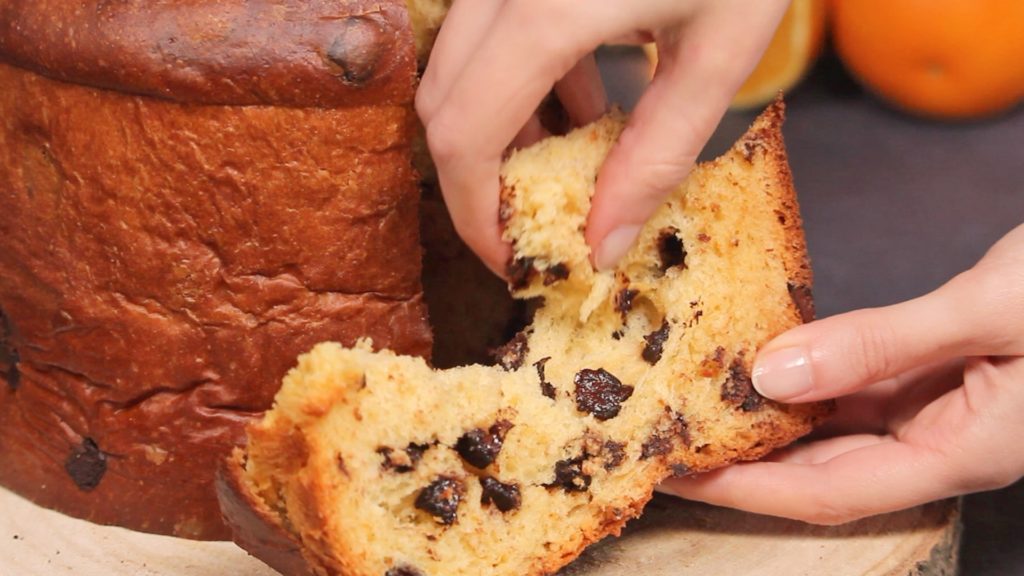
For the second rising, I prefer to let Panettone rise in refrigerator for about 12 hours; then I let it rest at room temperature 4-5 hours or until is about 1 cm from the mold top.
You can also let it rise in refrigerator for up to 20 hours, but if you don’t want to wait so many hours for the second rising, you can place Panettone to rise in a warm place at about 28°C-82°F (slightly preheat and turned off your oven and place Panettone in the turned off oven). It’s ready to be baked until it almost reaches the side’s top as you can see in the picture above.
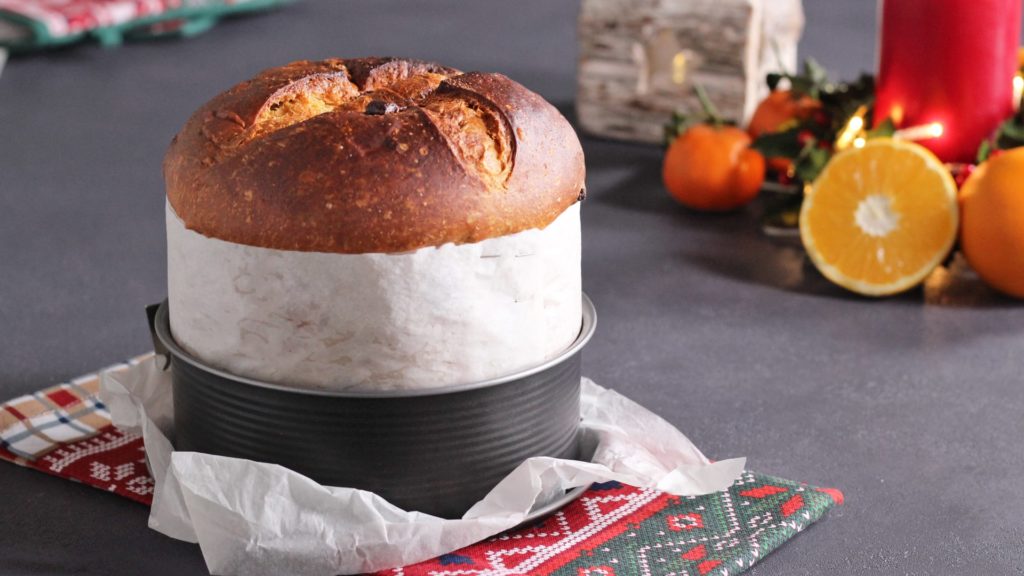
This recipe suites for 1 kg Panettone paper mold (17cm-6,5inch diameter and 12cm-4,5inch high sides). You have 3 options:
- Buy the traditional 1 kg Panettone paper mold;
- Make the mold from scratch using parchment paper, as I show in this recipe video;
- Make the mold using a 17cm-6,5inch springform pan and parchment paper for the high sides, the method I showed in this recipe that is my favourite alternative to buy the mold!
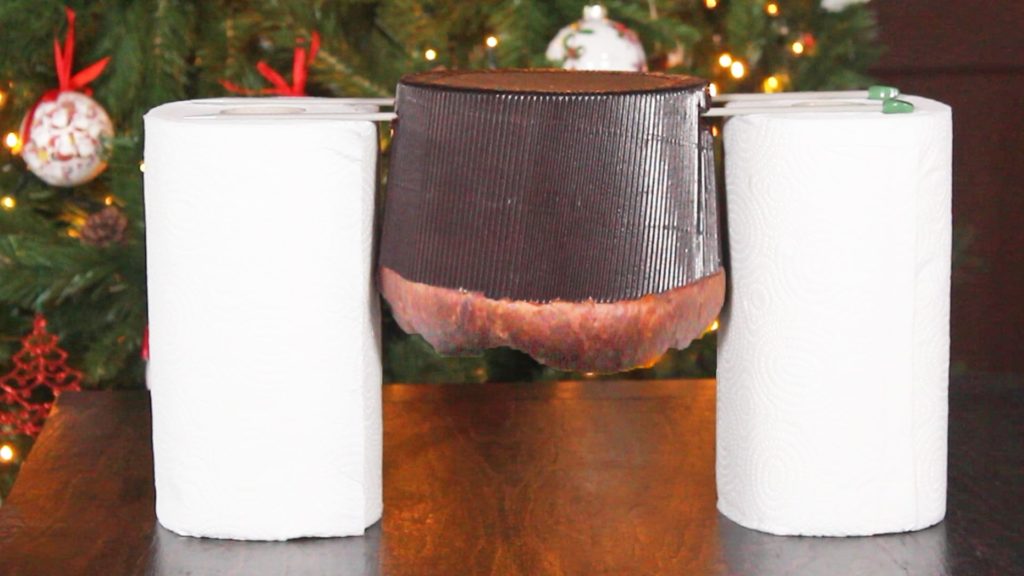
The pro of making Panettone in its traditional mold, is that you can skewer with two long knitting needles IMMEDIATELY when it comes out of the oven, invert it upside down over two paper towel rolls, and cool it down for at least 2 hours upside down.
Check out my Panettone Easy Way to see how I cool down Panettone upside down.
Thanks to the upside down cooling technique, Panettone will keep its domed shape and it won’t collapse!
If you use a homemade parchment paper mold like I show you in this recipe, unfortunately you can’t skewer and invert Panettone because it won’t stick to the parchment paper mold and it it would fall if you turned it upside down.
For this reason a Panettone made with homemade parchment paper mold becomes a bit flat on top when it cools down.
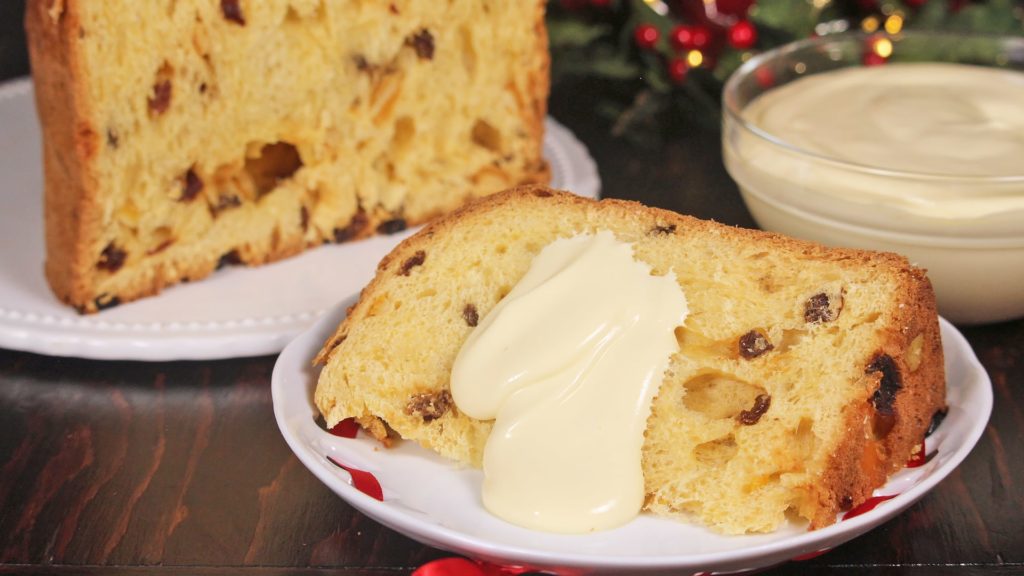
For a true Italian tasty experience, you should try Panettone with the traditional Italian Panettone Mascarpone Frosting recipe: it’s a match made in heaven!
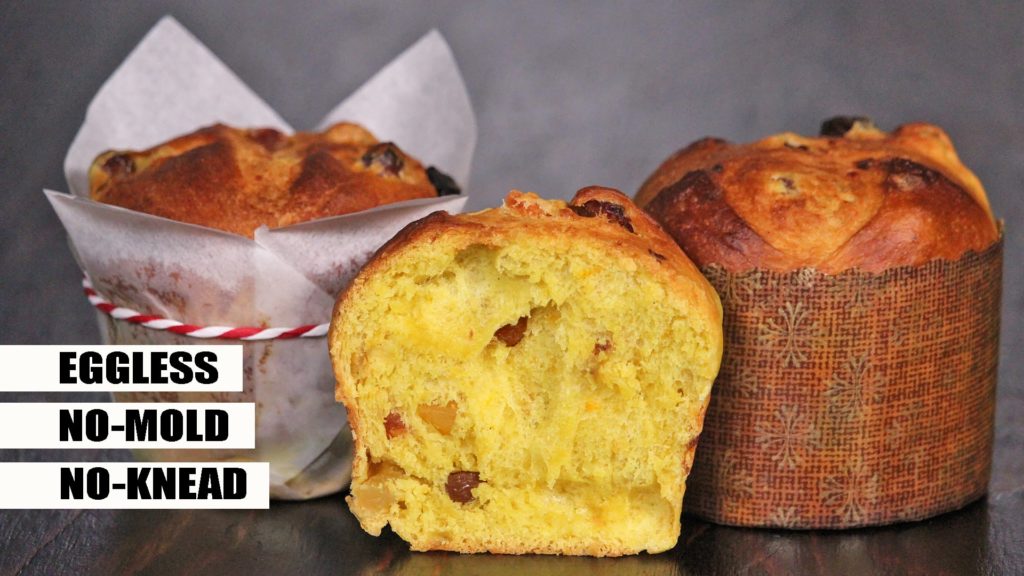
If you can’t eat eggs, I made a delicious Eggless Mini Panettone recipe! The amount of dough is the same you need for a 1kg Panettone, I just divide the dough into mini molds; feel free to make this Eggless Panettone into a 1kg large mold.

